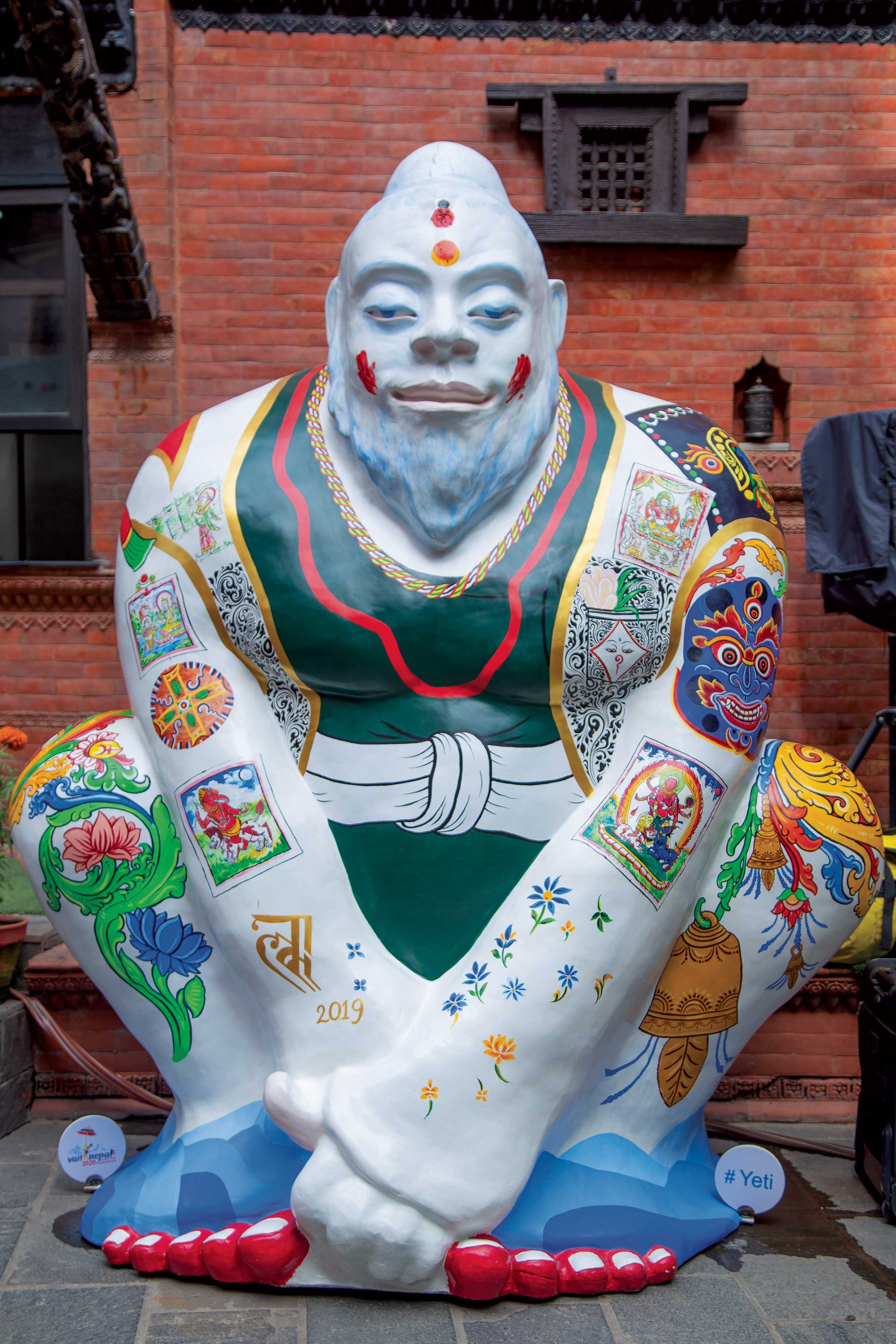
I feel it’s quite unfair for Thamel to be known only for tourism reasons. However, it is true that Thamel was one of the places that boosted Nepal’s tourism. And perhaps that is why this place has still hidden itself from all the hubbub of Thamel’s popularity.
Thamel has a lot of concrete houses, a lot of coffee places, a lot of colorful trinket shops, bookstores, Chinese eateries, live music, and tattoo places. But deviating from the usual stops in Thamel, I took a silent walk from Amrita Marg to this ancient bahi that Thamel gets its name from. The bahi is guarded by a Bhairav at the entrance. And, inside a beautiful three-story chaitya, a Buddhist shrine painted in yellow and brick red waits for its story to be retold. When you look above, there is a deity in yellow, looking down from the chaitya at the courtyard. Some say the deity is Atisha Dipankar, and some say it is Singha Sartha Baha.
The story of the latter is one that has been heard many a time by the locals. Singha Sartha Baha, who is regarded as Garuda Aju by the Pradhan families living here, was a merchant (but also a potential Boddhisatva). The pioneering trader once ventures to a faraway land with his five hundred traders. On returning from the journey, the troop is distracted by man-eating demons disguised as beautiful apsaras. Avolikiteshwor, the god of compassion, discloses to Singha Sartha that the apsaras are monsters in disguise, and hence, they should flee immediately.
Avolokiteshwor presents him a gigantic flying horse, and Singha Sartha orders all his men to ride on the flying horse with him, warning them not to look back. Nevertheless, everyone but Singha Sartha falls prey to the bewitching apsaras. Singha Sartha is a determined man unfettered by desires, and so he gets away. The apsara who had failed to seduce him, however, follows him to his palace here in this ancient Thamel. Although a man-eating demon, she is compassionate, as well.
The people of this bahi strike a deal with her, on condition that she cannot harm anyone here. She happily agrees to be their protector, and thus, she becomes the Jatika Ajima. Jatika, because she consumes the surplus liquid collected while boiling rice (in Newar language, ‘jati’ is excess liquid, ‘ka’ is intake). Ajima means grandmother, because she agreed to become the protector of the Thambahi people. When you go outside of this wall, take maybe ten steps forward to the right side of this bahi, and you will see Jatika Ajima there.
Every year, this bahi celebrates Chakon Dyoh Jatra based on this very legend. A similar image of Singha Sartha painted in red is displayed in the monastery complex before it is paraded around ancient Thamel on the next day of the full moon during the month of Fagun (February/March).
But, besides Singha Sartha Baha, the bahi is full of other Buddhist deities, and their main caretaker is the Pradhan family of this community. There is much to observe and interpret in this Bahi, and therefore, it is a wonderful discovery for all wanderers. This ancient bahi actually has many names, and one of them is Vikramsheel Mahavihar. When you do get time, you should douse yourself in Thamel’s beginning with this place. Can you now guess now: where am I?











